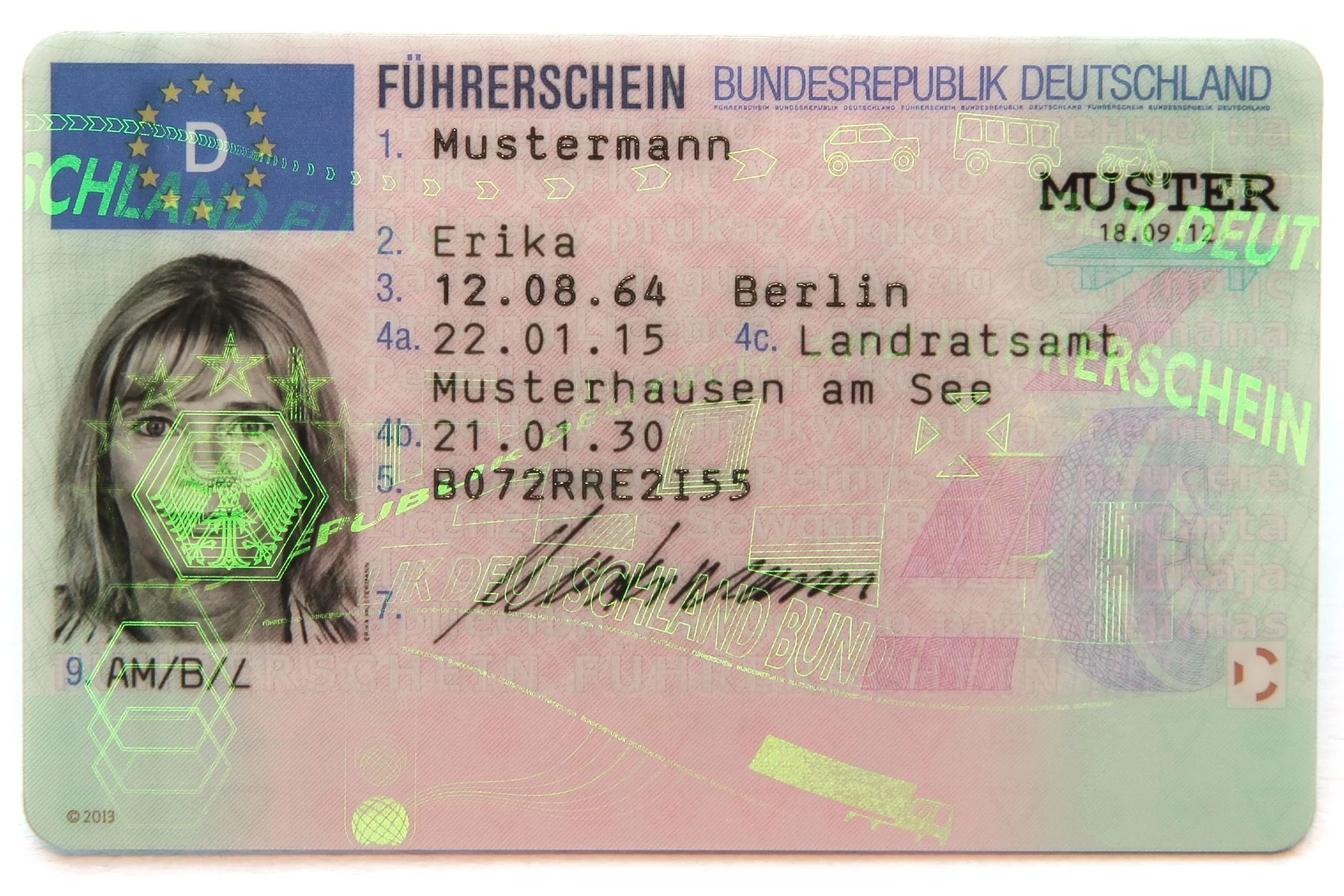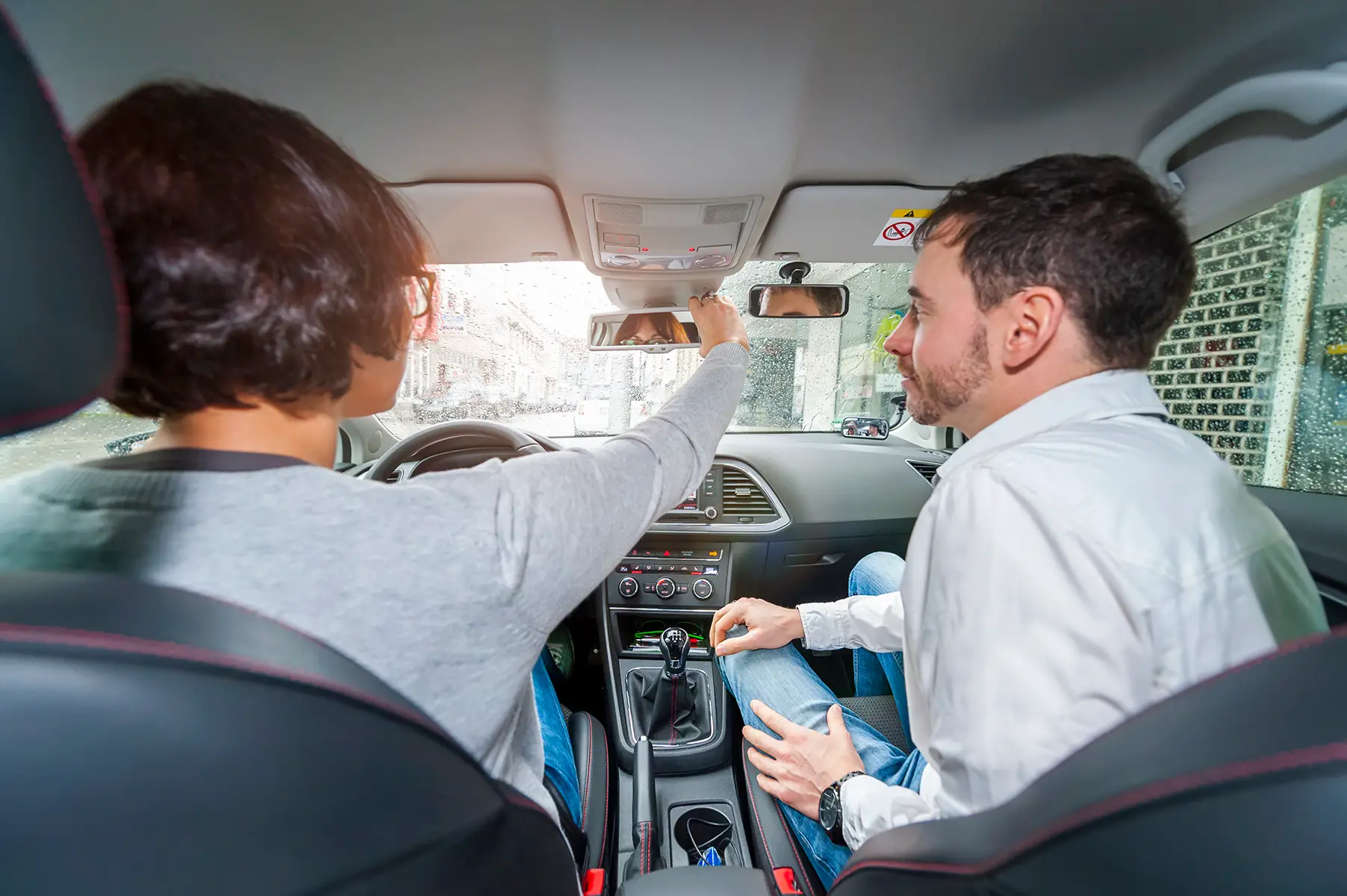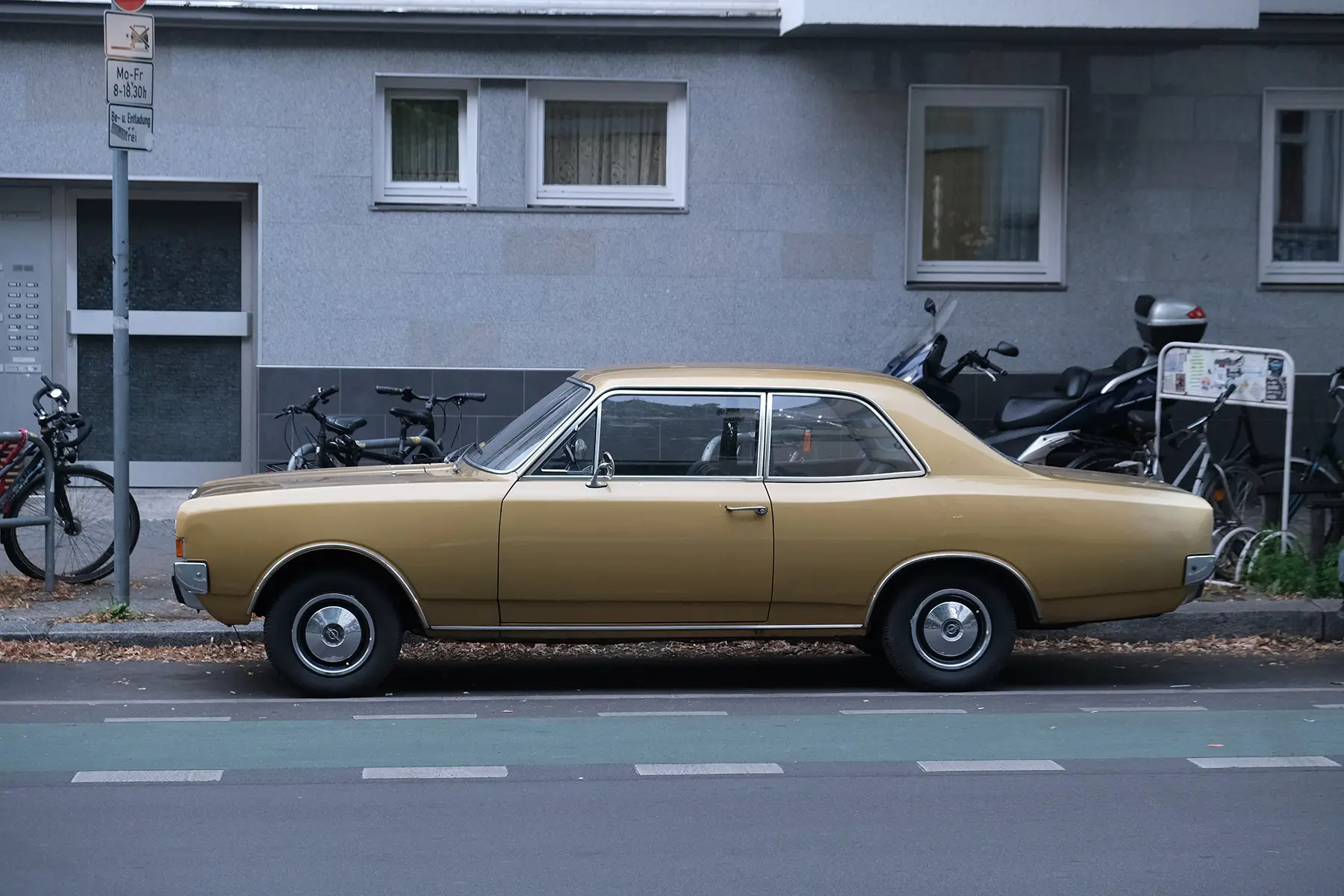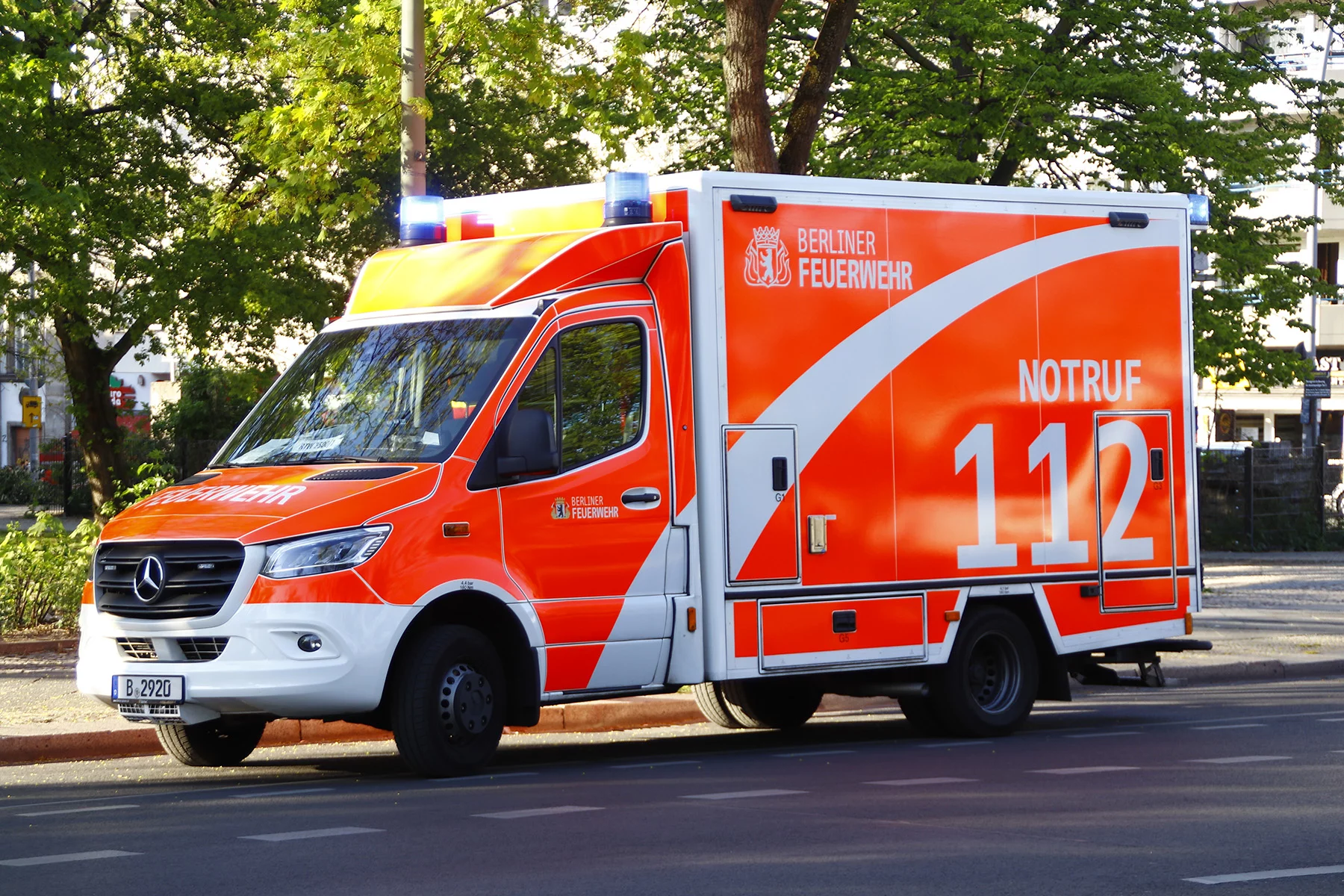Strict rules apply when driving in Germany, and you’re not allowed to drive a car without supervision unless you are over 18 – even if you have a license in your home country.
Find out, if at all, you need to exchange your permit or get a new driver’s license.
Sections include:
- Driving licenses in Germany
- Getting a German driver’s license
- Driving tests in Germany
- German driving lessons
- Driving with a foreign driver’s license
- Exchanging a foreign license in Germany
- Renewing a German driver’s license
- Lost or stolen driver’s licenses in Germany
- German driver’s licenses for other vehicles
- Useful resources
Allianz Direct
Stay safe on the road with Allianz Direct! Their car insurance and vehicle liability insurance policies provide excellent coverage for an inexpensive price. Plus, they have optional add-ons, just as you want. Wherever the road takes you, you'll stay well-secured thanks to the affordable vehicle insurance from Allianz Direct.
Driving licenses in Germany
A German driver’s license (führerschein) follows the EU standard. It is a plastic card, similar in size to a credit card. It contains your information, including which vehicles you are allowed to drive. All licenses that were issued after 2013 are valid for 15 years.

On the front of the card you’ll find the following:
- your full name
- your picture
- your date of birth
- the date of issuing and date of expiration
- the license number
- the issuing authority
- your signature
- your license class (e.g., B for cars)
On the back of the card, you can find a table with information on the different driving classes. Germany has five main classes of driving licenses, which are:
- A – motorcycles and mopeds
- B – cars
- C – any light or heavy commercial trucks
- D – buses with 8 seats or more
- L and T – small and large tractors
Driver’s licenses are issued by local driving license offices (führerscheinstellen) and registered with the Central Register of Driving Licences (zentrales fahrerlaubnisregister – ZFER).
In Germany, you can drive a motorized vehicle when you are over 15, and a car when you are over 18. You must always have your license (with you when driving a vehicle, and you may not use a provisional license.
There are complex rules for foreign licenses – some expats can exchange their driving permits, and others require a new license to get on the road. Of course, those staying in the country temporarily won’t need a German driver’s license.
Getting a German driver’s license
If you’re registered as a driver in Germany, and you’re over 18, you can apply for a new license through your local driver’s license authority (Fürhrerscheinbehörde).
In cases where the driving license issued by your home country isn’t recognized in Germany, you may have to attend driving lessons and pass both the written and practical driving tests.

When applying for a driving license, you will need to provide the following (PDF):
- An official identity document, such as an identity card or passport
- A certificate of registration
- A recent photo that adheres to German passport photo requirements
- Certificates of any necessary medical exams – most licenses require a visual test, while bus and coach licenses need an additional examination.
- Evidence that you have taken part in a first aid training course
Some nationalities may also need to demonstrate that they have participated in a first-aid training course.
Driving tests in Germany
Passing a driving test in Germany is not as difficult as in some other countries, but the tests are among the most expensive in the world. There are two testing organizations in Germany: DEKRA and TÜV.
Drivers in Germany who have never had a license, will need to register for lessons at a driving school (Fahrschule). Before you take your test, you’ll need to apply for a driving license – once your application has been granted, your driving school will register you for your tests.
There are two tests to pass in Germany: first, you must pass the theory test, followed by the practical test. In addition to the tests, you must also have had an eye examination within the past two years and taken a first aid course (Erste Hilfe), which you can book through the German Red Cross (link in German).
Theory test (Theorieprüfung)
The age at which you can take your theory test depends on the type of vehicle you wish to drive. To drive a car, you may take it three months before your 18th birthday. You’ll also need to attend 12 hours of theory lessons (6 if you already have a license).
You’ll take the exam on a computer, consisting of picture, text, and video questions relating to road signs and driving situations. Fortunately for internationals, the theory test is available in eleven different languages. If you are taking the test for a category B driving license, the exam consists of 30 questions, weighted with two to five error points for an incorrect answer. You may score no more than ten error points and may only incorrectly answer one five-point error question.
Theory tests in Germany cost around €25 – although some schools require an additional registration fee. When taking the test, you must bring your identity card or passport, a training certificate from your driving instructor, and proof of payment. The theory test results are valid for one year – if you do not pass the practical driving test in this time, you’ll have to retake it.
Practical driving tests in Germany
Once you have successfully passed the theory test, you can take the practical driving test. It costs around €120, although you might incur additional costs for registering. You may take the test one month before your 18th birthday.
On average, a practical driving test takes 45 minutes. At the start, the examiner will usually check your identity and have you carry out a safety check of the vehicle, such as checking the level of oil in the engine. Then, you’ll drive – the examiner will assess your ability to drive carefully and calmly. They will also take into account your basic driving, parking, steering, suitable speed, awareness of traffic and other road users, highway driving, and other skills. It can be a nerve-wracking experience, but there are lots of ways you can try to keep calm.

Not every mistake you make will lead to a failure, as the examiner will take the overall impression of your driving into account. However, there are certain mistakes that your examiner will fail you for automatically. These include:
- Ignoring right of way
- Causing danger or damage
- Not stopping at a red traffic light, or equivalent police signs
- Violating overtaking bans
- Changing lanes without checking traffic first.
You’ll find out the test results immediately, and if you’re successful, the examiner will issue you your driving license.
If you do not pass the test, you can retake it up to two more times and only need to leave two weeks between each attempt. However, if you fail the third test, the intervals between them will get longer. There’s no limit to how many times you can take the practical driving test.
Probation period
After passing your driving test, you’ll receive your German driver’s license, and you’ll be able to drive in Germany. However, if you’ve received a permit for the first time, you’ll be on a probation period for the first two years of driving.
During the probation period, you cannot drive after consuming any alcohol. You may also receive extra points on your license if you break any traffic violations. You might receive fines, an extension of the probation period, or have your license revoked for repeated bad behavior.
German driving lessons
You must take driving lessons at a registered driving school to obtain a German driving license. Farschule-123 lets you search for your nearest driving school and filter by the type of vehicle you want to learn to drive, and it’s also possible to find theory classes in a range of foreign languages. Each driving school can determine its own fees, so they vary around the country. Driving schools must be transparent about prices; costs must be announced on the business premises and adhered to.
There’s no official minimum number of lessons you need to take before applying for a driving test, but your driving instructor must consider you to be able to drive safely. In addition, practical lessons must cover several situations, including driving cross-country, at night, and on the highway.
If you’re short on time, many driving schools offer intensive courses where you can get your license quickly in just a few weeks. These courses usually last two weeks, with full-day lessons – they may even include accommodation and meals, but this will add to the cost.
Driving with a foreign driver’s license
If you have an EU, EEA, or international driving license, it is valid in Germany, and you won’t need to get it exchanged or translated. However, once it expires, you will need a new German driving license. If your driving license is from a non-EU or EEA country, it will typically be valid in Germany for the first six months. After that, you must get a German driving license. This also applies to licenses issued in the following countries:
- Andorra
- Hong Kong
- Monaco
- New Zealand
- San Marino
- Switzerland
- Senegal
If the license was issued outside of the EU/EEA, you can use it to drive in Germany for the first six months. This starts when you register your residential address with the German authorities. In some instances, you will need to translate your driving license into German. If this is the case, it must be translated by a German, an internationally recognized automobile organization, or a sworn translator.
This works slightly differently if you have a UK driver’s license. In this case, you’ll convert it to an EU/EEA license within six months. It’s currently possible to convert a UK license to a German driver’s license without a theory or practical test.
Exchanging a foreign license in Germany
If you are from outside the EU/EFTA region, you need to exchange your driving license within six months of your arrival to the country. You can do so at the local driving license office (Führerscheinstelle), which you’ll find at your local authority or town hall.

There’s usually a fee to pay, which varies between authorities. In Hamburg, for instance, it can cost €43–73.
To exchange your license, you’ll have to provide evidentary documentation. This usually includes:
- Proof of identity, such as your passport
- Proof of address
- Passport photo
- Your original license with a statement to show the foreign license is still valid
- Certified German translation of your foreign driving license
- Confirmation from the Office for Foreigners confirming your residency
- Proof of completing a first-aid course
There are also additional medical tests required, depending on the class of license you’re going for:
- For an A or B-class driving license, you need to undergo an eye test
- C or D-class licenses require a medical certificate that confirms sufficient clarity of vision
- If you are 50 years or older and applying for a D-class permit, you need an additional medical certificate that ensures that you are able to deal with stress, and that your orientation skills, concentration, attention, and reaction speed are reasonable
Renewing a German driver’s license
If you have a German driving license, it’s valid for 15 years. After this time, you’ll need to renew it. To renew your license, you must be registered with a German local authority. Simply make an appointment at your local driving license authority four weeks ahead of expiry – you shouldn’t need to retake any part of the driving test to renew your license. Be sure to take your current driving license and a recent passport photo.
The renewal usually costs around €24 and takes about four weeks to arrive. It’s not possible to renew foreign driving licenses. Instead, you’ll have to exchange it for a German one.
Lost or stolen driver’s licenses in Germany
If your driving license gets lost or stolen, you must apply for a replacement. For stolen licenses, you must contact the police to report the crime. You’ll need a theft report, which you must take to your local licensing authority, plus proof of ID and a biometric passport photo. It should take around four weeks for your new license to arrive.
For lost driving licenses, the process is much the same – except you’ll need to write a statement explaining how the loss occurred. If you later find the old driving license, you must return it to the licensing authority.
If you lose a foreign driving license, the German authorities may still be able to help. They’ll have to contact the issuing authority in your home country, so the process might take longer.
German driver’s licenses for other vehicles
Germany has five main categories of driving licenses, each of which has a different age limit.
Personal vehicles
| Passport label | Type of vehicle | Age limit |
| AM | Moped | 15 (only domestically); 16 |
| A1 | Motorcycle (cylinder capacity cannot be more than 125 cubic centimeters (cc), and power cannot exceed 15 horsepower (hp) | 16 |
| A2 | Motorcycle (power cannot be more than 47 hp) | 18 |
| A | Motorcycle (any other that does not fall under the above category) | 20 (if you’ve previously had an A2 motorcycle for two years); 21 for tricycles with a power that exceeds 15 kilowatts (kW); 24 |
| B | Motorized vehicles (e.g., a car) (anything not mentioned under class A, weighing no more than 3,500 kg, and designed to carry up to eight people) | 17 (with supervision, also known as bf17); 18 |
| BE | B-class vehicles with a trailer or semi-trailer (weighing between 750 and 12,000 kg) | 17 (with supervision); 18 |
Professional vehicles
| Passport label | Type of vehicle | Age limit |
| C1 | Motorized vehicles (e.g., heavy goods vehicles (HGV)) (anything not mentioned under classes A and D, weighing between 3,500 and 7,500 kg, and designed to carry up to eight people. Permitted to tow a trailer that weighs less than 750 kg) | 18 |
| C1E | C1-class vehicles with a trailer or semi-trailer (weighing between 750 and 12,000 kg) | idem |
| C | Motorized vehicles (e.g., heavy goods vehicles (HGV)) (anything not mentioned under classes A and D, weighing more than 3,500 kg, and designed to carry up to eight people. Permitted to tow a trailer that weighs less than 750 kg) | 18 (only domestically and for training purposes); 21 |
| CE | C-class vehicles with a trailer or semi-trailer (weighing between 750 and 12,000 kg) | idem |
| D1 | Motorized vehicles (e.g., small buses) (anything not mentioned under class A, designed to carry up to 16 people, and not longer than 8m. Permitted to tow a trailer that weighs less than 750 kg) | 18 (only after completing vocational training); 21 |
| D1E | D1-class vehicles with a trailer or semi-trailer (weighing more than 750 kg) | idem |
| D | Motorized vehicles (e.g., buses) (anything not mentioned under class A, and designed to carry more than 8 people. Permitted to tow a trailer that weighs less than 750 kg) | 18 (for training purposes, no passengers allowed); 20 (after completing vocational training); 21 (after completing basic qualification); 23 (after accelerated basic qualification); 24 |
| DE | D-class vehicles with a trailer or semi-trailer (weighing more than 750 kg) | idem |
| T and L | Tractors | 16 |
There are also special driving licenses to drive a taxi, forklift truck, passenger transport, and fire brigade vehicles. Driving schools around Germany offer courses for learning to drive all of these vehicles.
Once you’re ready to get out on the open road, you’ll also need to purchase mandatory car insurance. Germany is home to multiple car insurance companies, including DA Direkt.
Useful resources
- ADAC – driving license exchange rules (link in German)
- International Driving Authority – get your driving license translated
- Fahrschule-123 – find a local German driving school
- Prepare for the driving theory test at fuehrerschein-bestehen.de (link in German)







